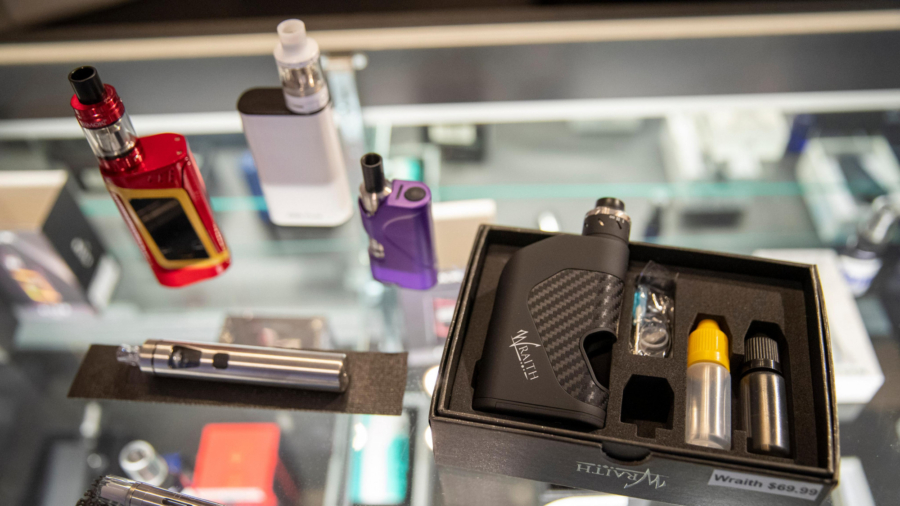Since its peak in 2019, when five million middle and high school students said they use e-cigarettes, new findings reveal a significant drop in recent years, with vaping rates hitting a low point since its peak.
Data from the National Youth Tobacco Survey released by the Centers for Disease and Control Prevention (CDC) and the Food and Drug Administration (FDA) shows vaping rates among middle and high school students dropped from 2.13 million in 2023 to 1.63 million in 2024, representing a decrease of half a million users.
“Youth use of tobacco products in any form – including e-cigarette and nicotine pouches – is unsafe. Keeping tobacco products out of the hands of youth remains a top priority for the FDA,” Dr. Robert Califf, commissioner of the FDA, said in a recent social media post.
The findings, published Sept. 5, show the largest drop among youth was among high school students, where e-cigarette use fell from 1.56 million to 1.21 million, according to a press release the same day by the FDA.
“The continued decline in e-cigarette use among our nation’s youth is a monumental public health win,” said Brian King, director of the FDA’s Center for Tobacco Products, in the press release.
The study was conducted between Jan. 22 and May 22, 2024, for middle school grades 6 to 8 and high school grades 9 to 12, with 283 schools surveyed and 29,861 students who took the test, according to the study.
Among those who indicated they use e-cigarettes, 26.3 percent reported daily use, with 360,000 of the students in high school and 60,000 in middle school.
More than half of students reported using disposable vapes, nearly double the number who say they prefer refillable pods or cartridges.
Flavored products were the top choice among youth, with 87.6 percent of current e-cigarette users opting for flavored options. Fruit flavors lead at 62.8 percent, followed by candy at 33.3 percent and mint at 25.1 percent.
Some states have implemented bans of such flavors to discourage underage usage, including those in Massachusetts, New Jersey, New York, Rhode Island, and California, and some restrictions in Maryland and Utah, according to the Campaign for Tobacco-Free Kids, a non-profit that advocates against tobacco consumption.
“It is encouraging news that youth e-cigarette use has fallen sharply. But we cannot let down our guard when 1.6 million kids still use e-cigarettes and 42 percent of high school users report frequent or daily use, a strong indication they are addicted to the high-nicotine products now on the market,” the nonprofit’s President and CEO Yolonda Richardson said in a Sept. 5 statement.
The survey also studied brand preferences, with Elf Bar emerging as the number one choice among the students at 36.1 percent, followed by Breeze at 19.9 percent and Mr. Fog at 15.8 percent, all of which are single-use disposables.
According to the FDA, there was a “substantive” drop in the reported usage of the non-FDA-approved Elf Bar brand vapes, falling from 56.7 percent in 2023 to just over 36 percent this year.
They said this comes thanks to recent enforcement actions against the brand since last year, including over 1,000 warning letters and 240 civil fines to retailers and suppliers. They have also placed the brand on the “red list” for imports, which allows them to detain the products without a full investigation when illegal imports are first found.
While less commonly used, about half a million students reported using nicotine pouches, which are placed under one’s tongue. Usage has slightly increased in the last year. In 2023, about 1.5 percent of students said they used the pouches, which increased to 1.8 percent in 2024.
“Our guard is up. We are aware of the reported growing sales trends for nicotine pouches and are closely monitoring the evolving tobacco product landscape for threats to public health, particularly when it comes to kids,” King said regarding the increase in the FDA press release.
As students return to school, health officials are urging educators and parents to engage in conversations about the risks of tobacco product use. The FDA has made resources available through its Vaping Prevention and Education Resource Center, providing science-based lesson plans and materials to keep the products “out of the hands of youth.”

